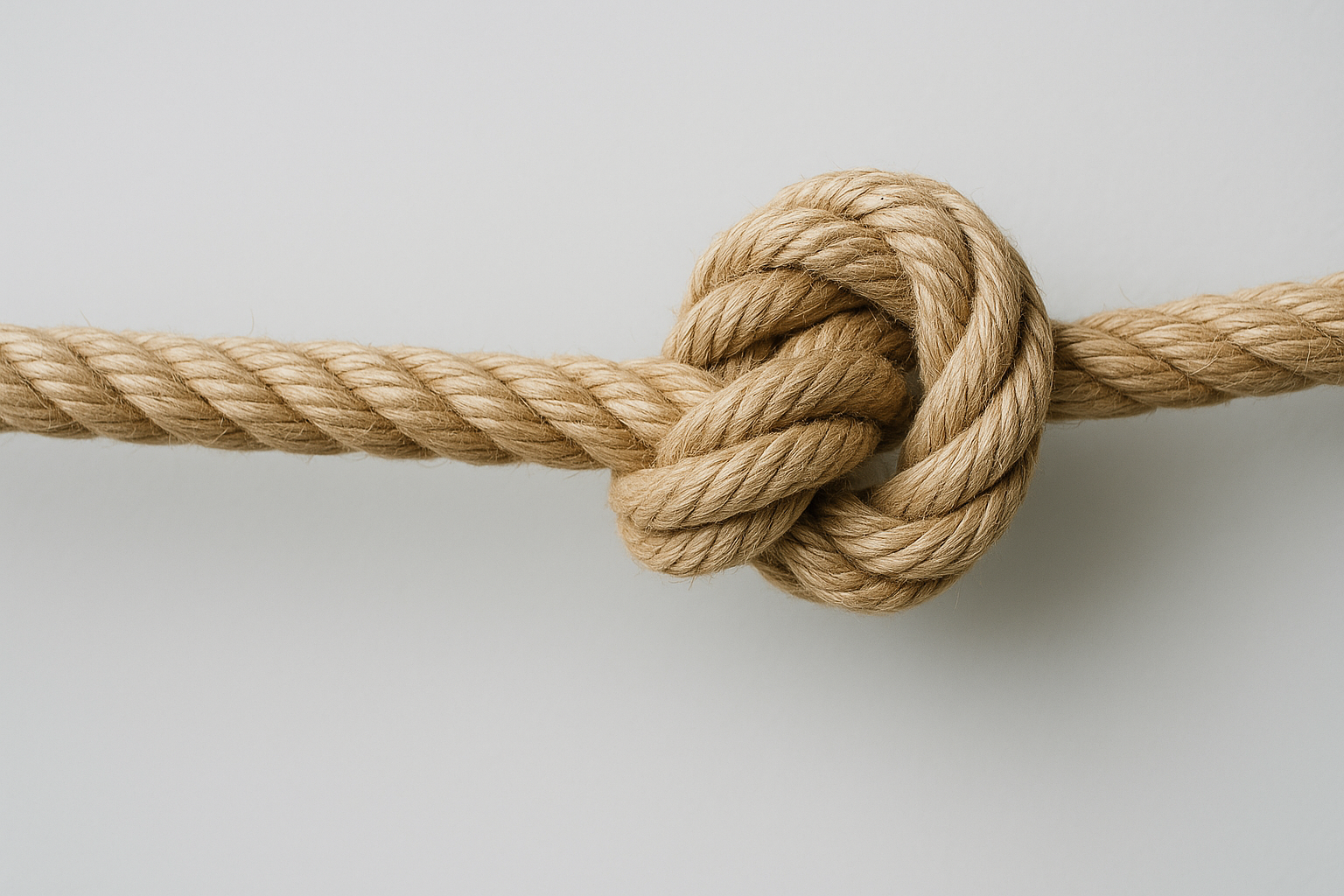Elevate Your Staircase Style With A Unique Handrail Solution
Share
Copy Link

Transform your home’s staircase with an innovative approach that combines style and functionality. Discover the untapped potential of ropes as a handrail, offering both aesthetic appeal and practical benefits. Embrace a design that complements various home decor styles while ensuring durability and safety.
When considering a staircase renovation, the materials you choose for the handrails can dramatically influence the overall look and feel of your home. Unconventional options like ropes offer a fresh perspective, allowing for personalised touches that reflect your unique taste. This approach not only enhances visual appeal but also introduces a tactile element to your living space. By exploring innovative materials, you open up possibilities that redefine traditional home design norms. Incorporating ropes into your staircase design can be an exciting opportunity to merge style with function seamlessly.
The evolution of interior design has led to increasingly creative solutions for everyday home features. Modern homeowners are now seeking ways to personalise their spaces while maintaining functionality, and the staircase presents a perfect opportunity for such innovation. By re-imagining traditional elements like handrails, you can create a distinctive focal point that elevates your home's character while serving its essential purpose.
Ropes as handrail options
Ropes present a versatile and durable alternative to traditional handrail materials, such as wood or metal. Their adaptability allows them to be integrated into various architectural styles, from rustic to modern minimalist designs. The natural fibres or synthetic variants of ropes can complement numerous interior themes, providing both aesthetic appeal and structural integrity. When choosing ropes for your staircase, consider factors like texture, colour, and thickness to ensure they align with your overall decor vision.
Moreover, ropes offer the advantage of flexibility, which means they can be easily adjusted or replaced as trends or personal preferences evolve. This adaptability makes them an attractive choice for those who enjoy updating their home’s appearance without significant expense or effort. Whether you opt for a nautical theme with thick, braided ropes or prefer sleek, thin lines for a contemporary touch, the options are virtually limitless.
The durability of ropes is another key benefit. High-quality ropes are designed to withstand daily use and environmental stressors without losing their structural integrity or aesthetic appeal. This makes them an ideal choice for busy households where practicality is just as important as style. With proper maintenance, rope handrails can remain a striking feature in your home for years to come.
When selecting rope materials, it's important to consider the environmental conditions of your space. Natural fibres like manila or sisal can add organic warmth but may require more maintenance in humid environments. Synthetic options such as polypropylene or nylon offer superior weather resistance and colourfast properties, making them ideal for areas exposed to sunlight or moisture. The diameter of the rope also plays a crucial role - typically, handrail ropes range from 28mm to 40mm in thickness, providing comfortable grip while maintaining visual proportions with your staircase design.
The versatility of rope handrails extends beyond their physical properties to their customisation potential. Custom-dyed ropes can be created to match specific colour schemes, while specialised treatments can enhance grip and durability. Some manufacturers now offer eco-friendly options made from recycled materials or sustainable sources, appealing to environmentally conscious homeowners who don't want to compromise on style or functionality.
Installation techniques
Secure installation of rope handrails is crucial to ensure both safety and longevity. One popular method involves attaching the rope directly to wall-mounted brackets or hooks strategically placed along the staircase. This technique not only provides stability but also allows for creative expression through varying tension levels and patterns in the rope arrangement.
Another approach is to incorporate vertical posts or balusters along the staircase edges, threading the rope through them to create a continuous railing effect. This method enhances the visual impact while maintaining structural support. It’s essential to select robust materials for these posts to prevent wear over time.
For those seeking a more seamless look, consider embedding the rope within grooves carved into wooden railings or walls. This installation style offers an understated elegance while keeping the rope securely in place. Regardless of the method chosen, ensure all components are installed correctly to prevent accidents and maintain functionality over time.
The tension adjustment system is a critical component of rope handrail installation that often goes overlooked. Professional installers recommend incorporating turnbuckles or similar tensioning devices at strategic points, allowing for future adjustments as the rope naturally stretches or contracts with use and environmental changes. This foresight in installation ensures your rope handrail maintains its optimal tension and appearance throughout its lifetime, while also simplifying maintenance procedures when needed.
Advanced installation methods now include innovative tensioning systems that utilise smart technology to monitor and maintain optimal rope tension automatically. These systems can be connected to home automation networks, allowing homeowners to receive notifications when maintenance is required or when tension adjustments are necessary. This integration of technology ensures consistent performance while minimising the need for manual inspections and adjustments.
Safety considerations
While aesthetic considerations are important when selecting rope handrails, prioritising safety is essential. Ensure that the chosen ropes have sufficient tensile strength to support weight consistently applied during use. Consult experts or manufacturers to determine appropriate specifications based on your staircase’s dimensions and expected load.
Regular maintenance checks play a vital role in sustaining safety standards over time. Inspect for signs of wear or fraying regularly and replace any compromised sections promptly. Additionally, ensure all supporting hardware remains secure and free from rust or corrosion.
Consider incorporating non-slip coatings or treatments on adjacent stair treads to further enhance user safety. By addressing these aspects proactively, you can enjoy peace of mind knowing that your stylish staircase upgrade does not compromise on safety standards.
Weather exposure can significantly impact rope handrail performance, particularly in outdoor or semi-outdoor installations. UV-resistant treatments and water-repellent coatings can extend the life of your rope handrail while maintaining its safety features. It's also crucial to consider the height and positioning of your rope handrail - standard building codes typically require handrails to be installed between 34 and 38 inches above the stair nosing, ensuring optimal support for users of all ages while meeting local safety regulations.
Design ideas for every home
Incorporating rope handrails into your home provides endless design possibilities tailored to various interior styles. For coastal-themed homes, consider using natural jute or hemp ropes paired with driftwood elements to evoke a sense of seaside charm. Meanwhile, modern interiors can benefit from sleek nylon or polyester ropes in monochromatic tones combined with metallic accents for an industrial edge.
If you prefer eclectic decor styles filled with vibrant colours and textures, experiment by mixing different types of ropes within one railing system—such as combining cotton cords with leather straps—to create visual interest without overwhelming other design elements in the space.
Finally, think creatively about integrating lighting solutions alongside rope handrails for added ambience during evening hours—consider LED strips woven between strands or spotlight fixtures illuminating focal points along staircases—to transform functional spaces into stunning showcases effortlessly adaptable across diverse home environments.
For those seeking a unique aesthetic, consider incorporating decorative knot work at terminal points or intervals along your rope handrail. Traditional maritime knots like the Monkey's Fist or Turk's Head can serve as artistic elements while also providing functional transition points between sections. These decorative touches can be further enhanced by selecting multi-coloured ropes or incorporating metallic threads for added sophistication, creating a truly bespoke installation that sets your staircase apart from conventional designs.
Published: June 19, 2025



